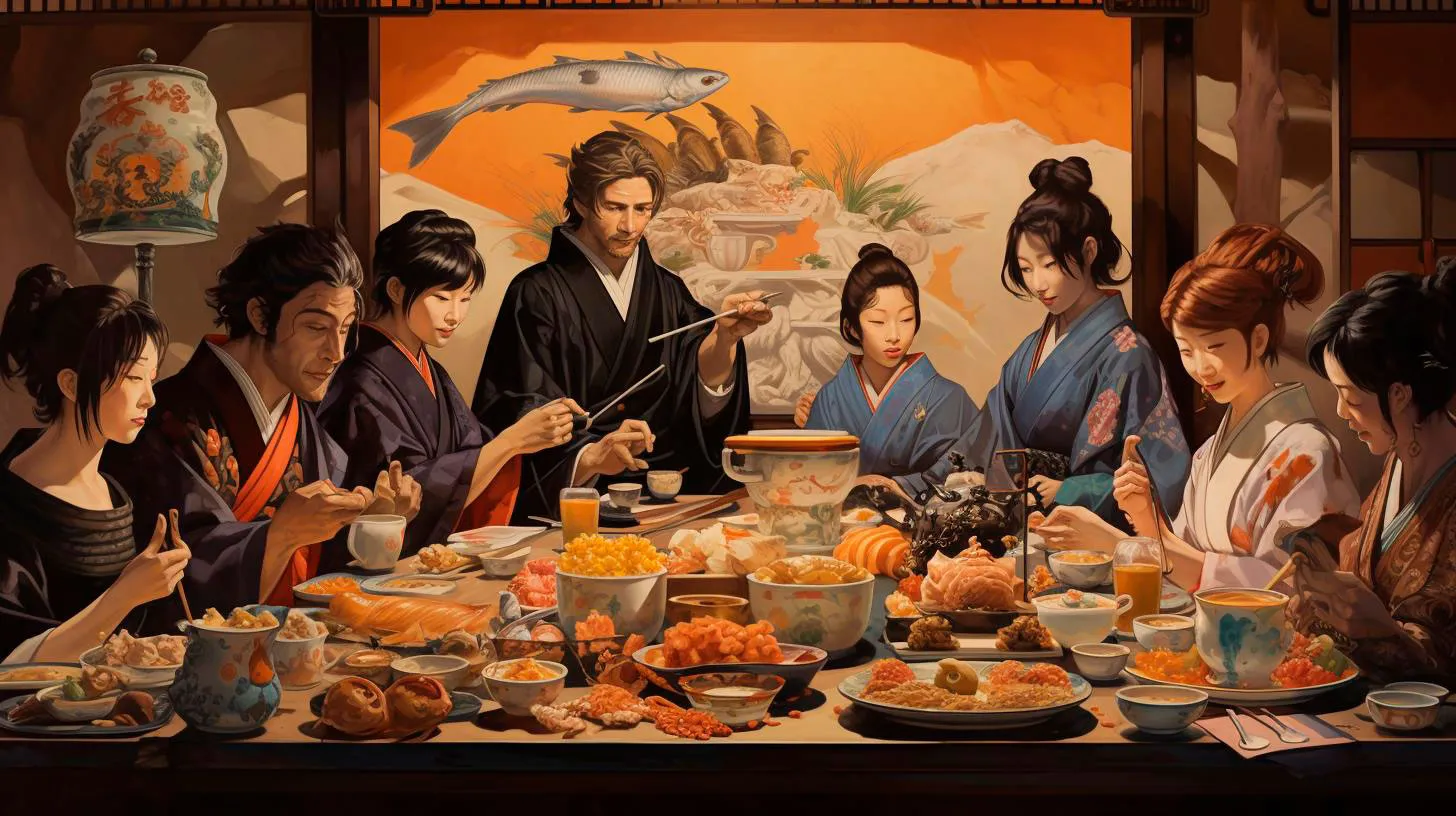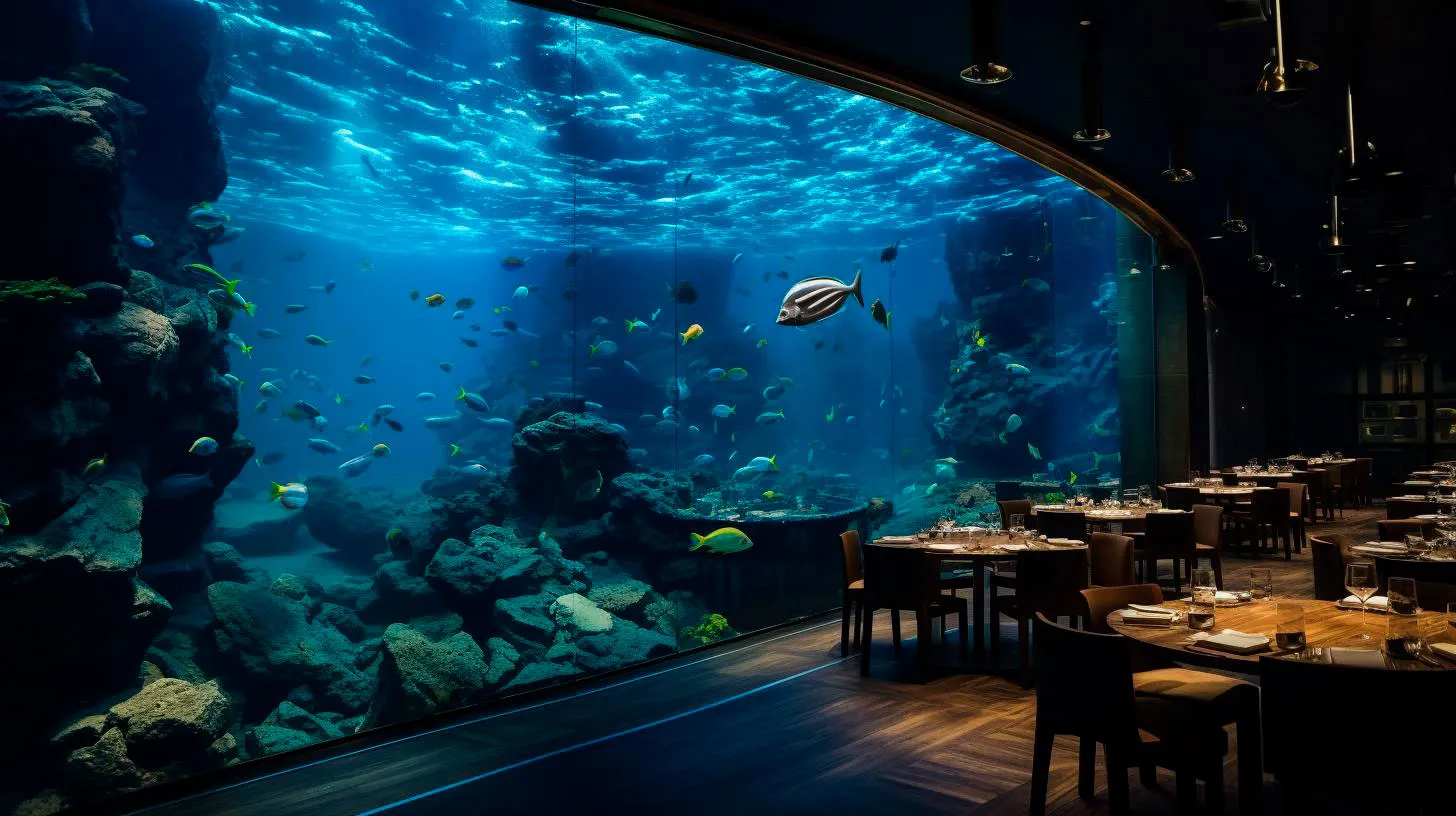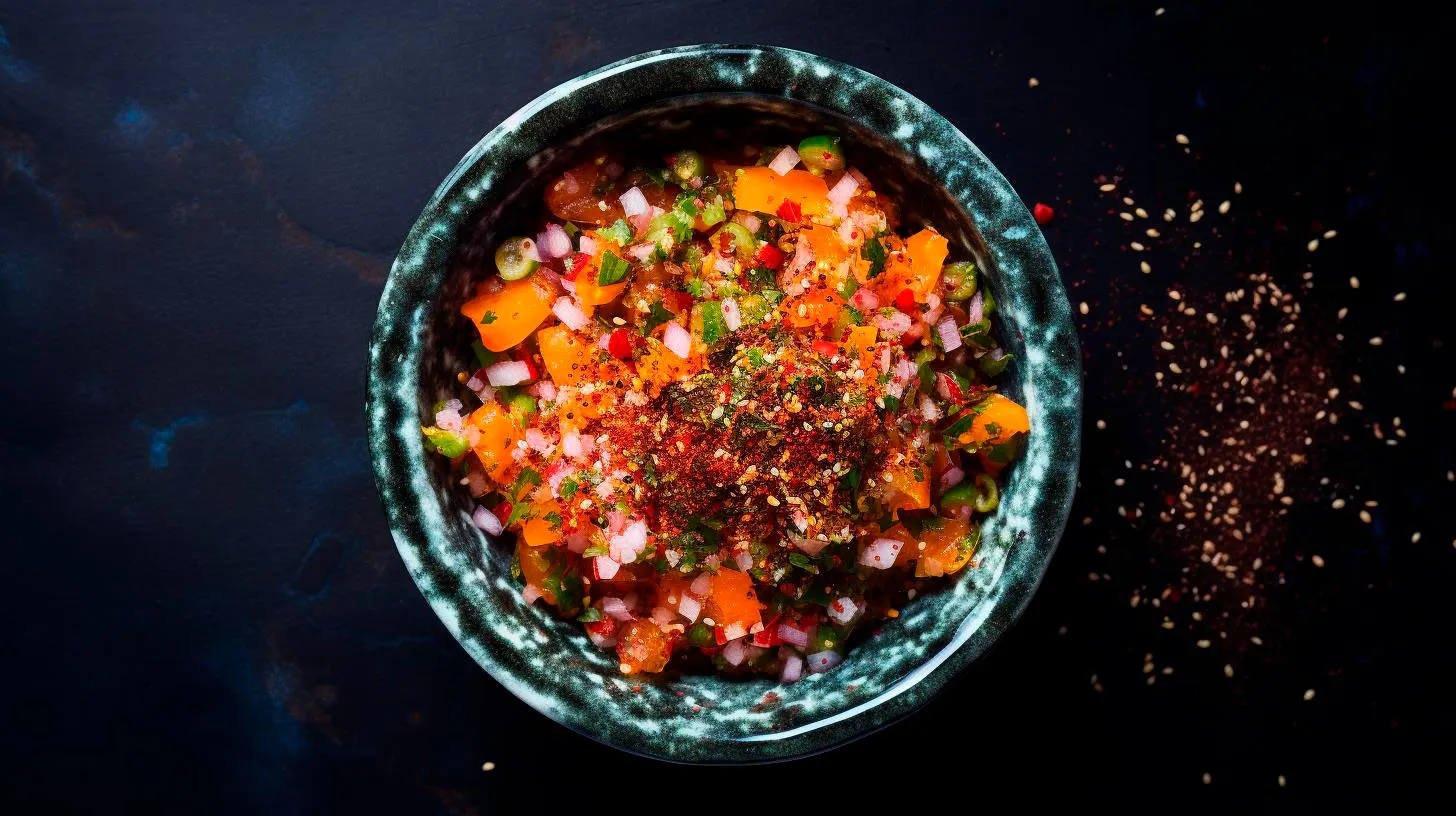From Farm to Table: Promoting Sustainable Aquaculture in the Sushi Industry
As a result, there has been a growing movement towards promoting sustainable aquaculture in the sushi industry, ensuring that the seafood served on our plates today will continue to be available for future generations.
The Importance of Sustainable Aquaculture
Sustainable aquaculture, also known as fish farming, offers a way to meet the increasing demand for fish and seafood without depleting our oceans. By cultivating fish in controlled environments, aquaculture farms provide a more reliable and predictable supply of seafood while minimizing the impact on natural marine ecosystems. Here are the key benefits of promoting sustainable aquaculture in the sushi industry:
- Preservation of Wild Fish Populations: By relying on farmed fish, we can put less strain on fish populations in the wild. Overfishing is a significant threat to marine biodiversity, and sustainable aquaculture allows us to reduce this pressure.
- Conservation of Ecosystems: Aquaculture can help protect fragile marine ecosystems by minimizing the negative environmental impacts associated with traditional fishing methods, such as bycatch, habitat destruction, and water pollution.
- Improved Food Security: With the world’s population continually growing, sustainable aquaculture offers a reliable source of protein to meet the increasing demand for nutritious food.
- Reduced Carbon Footprint: Many farmed fish, such as salmon and trout, require less energy and produce fewer greenhouse gas emissions compared to traditional livestock farming. By shifting to aquaculture, we can reduce the carbon footprint of our food production.
- Economic Opportunities: Promoting sustainable aquaculture creates new job opportunities, supports local economies, and contributes to the economic growth of coastal communities.
The Role of Technology in Sustainable Aquaculture
Technology plays a crucial role in advancing sustainable aquaculture practices and ensuring the industry’s long-term viability. Innovations in aquaculture technology enable farmers to monitor water quality, automate feeding systems, and reduce waste. Some of the key technological advancements in sustainable aquaculture include:
- Recirculating Aquaculture Systems (RAS): RAS technology allows fish to be farmed in closed-loop systems, reducing water usage and preventing the release of harmful substances into the environment.
- Smart Feeding Systems: By using sensors and automated systems, farmers can ensure that fish are fed the right amount of food at the right time, reducing waste and improving efficiency.
- Biological Filters: Integrated biological filters help maintain water quality by removing harmful substances, promoting a healthier environment for fish.
- Genetic Improvement: Genetic research and selective breeding programs aim to develop fish breeds that are more resistant to diseases, grow faster, and have improved sustainability traits.
- Alternative Feed Sources: Researchers are exploring the use of alternative and sustainable feed sources, such as insects or algae-based feeds, to reduce the industry’s reliance on wild-caught fish for feed.
Promoting Sustainability throughout the Sushi Supply Chain
While sustainable aquaculture practices are crucial, promoting sustainability in the sushi industry requires action throughout the entire supply chain. From sourcing to preparation, every step plays a role in reducing the industry’s ecological footprint. Here are some key takeaways to consider:
- Sustainable Sourcing: Sushi restaurants should prioritize sourcing seafood from responsible and certified aquaculture farms or from sustainable wild fish populations.
- Educating Consumers: Raising awareness among consumers about the importance of sustainable seafood choices can drive demand for responsibly sourced sushi.
- Efficient Operations: Restaurants can implement energy-saving measures, use eco-friendly packaging, and minimize food waste to reduce their environmental impact.
- Collaboration: Stakeholders across the sushi industry, including farmers, suppliers, and chefs, should collaborate to advance sustainable practices and share knowledge.
- Certifications and Labels: Encouraging the use of certifications, such as the Aquaculture Stewardship Council (ASC) or Marine Stewardship Council (MSC), provides transparency and assurance to consumers.
The Road to a Sustainable Future
As the sushi industry continues to thrive, making sustainability a priority is essential. Through promoting sustainable aquaculture practices, leveraging technology, and fostering collaboration, we can ensure the longevity of our oceans, protect marine ecosystems, and continue to enjoy the sushi we love. By embracing sustainable practices from farm to table, we contribute to a healthier planet and create a more sustainable future for generations to come.
Balancing Tradition and Preservation: Sustainable Fishing Methods in Japanese Sushi Culture
However, the increasing global demand for sushi has put a strain on our oceans and led to concerns about the sustainability of fishing practices. In this article, we will explore how Japan, as the birthplace of sushi, is leading the way in balancing tradition with the imperative need for preserving our marine ecosystem.
The Challenge of Sustainable Fishing
Sustainable fishing refers to practices that ensure the long-term health and viability of fish populations and the ecosystems they inhabit. With over 3,000 species of fish found in Japanese waters, the country’s fishing industry plays a significant role in both its culture and economy. However, overfishing, habitat destruction, and the use of harmful fishing methods pose a threat to the delicate balance of marine life.
To address these concerns, Japan has implemented various measures to promote sustainable fishing practices that align with the principles of sushi culture. These measures aim to protect delicate ecosystems, preserve fish stocks, and ensure the continuity of this culinary heritage for future generations.
Promoting Sustainable Fishing Practices
1. Regulation and Monitoring: The Japanese government, in collaboration with fishing organizations, has implemented strict regulations and monitoring systems to control fishing activities. These measures include setting catch limits, defining fishing seasons, and monitoring fish stocks to prevent overfishing and depletion of specific species.
2. Encouraging Responsible Fishing Techniques: Traditional, low-impact fishing methods like pole and line fishing and hand-netting are encouraged over more destructive methods, such as bottom trawling or using large-scale nets. These sustainable techniques minimize bycatch, protect the fragile marine environment, and ensure the quality of the catch.
3. Collaboration with Fishermen: The government actively collaborates with fishermen and fishing communities to educate and raise awareness about sustainable fishing practices. This cooperation helps bridge the gap between tradition and conservation and highlights the importance of environmental stewardship.
Preserving Biodiversity and Protecting Endangered Species
The rich biodiversity of marine life is essential for maintaining a healthy ecosystem. With Japan’s strong emphasis on preserving traditional fishing practices, there are concerted efforts to protect endangered species and maintain the delicate balance of marine ecosystems.
1. Red List Species Protection: The Japanese government, through its Fishery Agency, closely monitors and regulates the fishing of species listed on the IUCN Red List. These species, such as bluefin tuna, are recognized as endangered and require stringent measures to protect their populations and habitats.
2. Aquaculture and Fish Farming: To alleviate pressure on wild fish stocks, Japan has embraced aquaculture and fish farming. This environmentally-friendly approach allows for the controlled breeding of fish species, reducing dependency on wild catch while meeting the increasing demand for sushi.
3. Sustainable Sourcing: Restaurants and sushi chefs are encouraged to source fish from certified sustainable suppliers. Certification programs, such as the Marine Stewardship Council (MSC), ensure that fishing practices meet strict standards regarding sustainability, traceability, and responsible fishing methods.
Key Takeaways
- Japan is leading the way in promoting sustainable fishing practices within its sushi culture.
- Regulation and monitoring systems help control fishing activities and prevent overfishing.
- Encouraging responsible fishing techniques, such as pole and line fishing, minimize environmental impact.
- Collaboration with fishermen and fishing communities raises awareness about sustainable fishing.
- Efforts are focused on protecting endangered species and preserving biodiversity.
- Aquaculture and fish farming serve as sustainable alternatives to wild catch.
- Certification programs, like MSC, ensure sourcing from sustainable suppliers.
In conclusion, sustaining the delicate balance between tradition and preservation is crucial in the context of Japanese sushi culture. By promoting sustainable fishing practices, Japan demonstrates a commitment to safeguarding its marine ecosystems while upholding the rich heritage of sushi. As consumers, by supporting sustainable sourcing and responsible fishing practices, we can contribute to the longevity of this beloved cuisine for generations to come.
Sustainable Seafood Certifications: Making Informed Choices for a Sustainable Sushi Diet
However, not all seafood is sourced responsibly.
In recent years, sustainable seafood certifications have emerged as a valuable tool for consumers to make informed choices when it comes to selecting seafood, including fish used in sushi. These certifications provide assurance that the seafood comes from well-managed fisheries and responsible aquaculture practices. Let’s explore some of the most notable sustainable seafood certifications and the benefits they offer:
Marine Stewardship Council (MSC)
The Marine Stewardship Council (MSC) is one of the most recognized and respected sustainable seafood certifications worldwide. The MSC certification ensures that the seafood bearing its label is sourced from fisheries that meet their rigorous standards. These standards take into account factors such as the health of fish populations, environmental impact, and effective management of the fishery.
Advantages of choosing MSC-certified seafood:
- Supports sustainable fishing practices
- Preserves marine biodiversity
- Contributes to the protection of endangered species
- Provides traceability from ocean to plate
Aquaculture Stewardship Council (ASC)
With the growing demand for seafood, aquaculture has become an increasingly important industry. The Aquaculture Stewardship Council (ASC) certification focuses on ensuring responsible aquaculture practices to reduce environmental impacts and protect the welfare of farmed fish.
Benefits of choosing ASC-certified seafood:
- Supports sustainable fish farming
- Reduces the use of antibiotics and chemicals
- Protects water quality and ecosystems
- Ensures high animal welfare standards
Friend of the Sea (FOS)
The Friend of the Sea (FOS) certification is another prominent certification that guarantees the sustainability of seafood products. FOS verifies that the seafood is sourced from fisheries or farms that comply with strict sustainability criteria, including the protection of sensitive habitats and the reduction of bycatch.
Key reasons to choose FOS-certified seafood:
- Supports sustainable fishing and farming practices
- Preserves marine habitats and ecosystems
- Reduces the impact on endangered species
- Promotes social accountability within the industry
Global Sustainable Seafood Initiative (GSSI)
The Global Sustainable Seafood Initiative (GSSI) is an international partnership that aims to promote and recognize credible seafood certification schemes. GSSI evaluates certification programs against their criteria to provide confidence to consumers and businesses in making responsible seafood choices.
Advantages of choosing GSSI-recognized certifications:
- Ensures credibility and reliability of certification schemes
- Encourages consistent sustainability standards
- Facilitates informed decision-making for businesses and consumers
- Promotes transparency within the seafood industry
Key Takeaways
When enjoying sushi, making sustainable seafood choices is crucial to protect the health of our oceans and ensure a sustainable future for seafood consumption. By looking for certifications such as MSC, ASC, FOS, or GSSI-recognized labels, seafood enthusiasts can support responsible fishing and aquaculture practices while enjoying their favorite delicacies.
Remember these key points:
- Sustainable seafood certifications assure responsible sourcing
- MSC certification guarantees well-managed fisheries
- ASC certification focuses on responsible aquaculture practices
- FOS certification prioritizes protection of habitats and species
- GSSI promotes credibility and consistency in certifications
With the power to make informed choices, consumers play a vital role in driving the demand for sustainable seafood and preserving our oceans for future generations. So, next time you savor that delicious sushi roll, choose sustainability and support the certifications that safeguard our marine ecosystems.
The Environmental Impact of Overfishing: A Threat to Sushi Future
In this article, we will explore the environmental impact of overfishing and shed light on the potential consequences if no actions are taken to address this issue.
The Current State of Overfishing
According to the Food and Agriculture Organization (FAO), approximately 33% of global fish stocks are being fished at unsustainable levels. This means that fishing is occurring faster than the ability of fish populations to replenish themselves, putting immense pressure on marine ecosystems.
These alarming statistics reveal the urgent need for sustainable fishing practices. Overfishing not only depletes fish populations but also leads to the destruction of delicate habitats such as coral reefs and seafloors. Additionally, it disrupts the food chain, causing imbalances throughout the ecosystem that can have far-reaching consequences.
The Link Between Overfishing and Sushi
Sushi, a traditional Japanese delicacy, relies heavily on a variety of fish species. Tuna, salmon, and mackerel, among others, are staple ingredients in sushi dishes. However, the popularity of sushi and the demand for these fish species has put immense strain on their populations and their habitats.
One of the prime examples of overfishing’s impact on sushi is the decline of bluefin tuna. This sought-after fish species has faced significant population decreases due to overfishing, leading to its classification as a threatened species. If overfishing continues at its current pace, we may face a future where bluefin tuna, a signature sushi ingredient, becomes increasingly scarce.
The Impact on Marine Ecosystems
Overfishing has profound consequences for marine ecosystems beyond the depletion of fish populations. Let’s explore a few key impacts:
- Habitat Destruction: Bottom trawling, a common fishing method, involves dragging weighted nets across the seafloor, causing irreparable damage to sensitive habitats like corals and seagrass beds.
- Imbalance in the Food Chain: Removing large quantities of certain fish species disrupts the natural balance of the food chain. This can result in the proliferation of prey species and a decrease in predator populations, leading to potential ecosystem collapse.
- Bycatch: Unintended capture and subsequent release of non-target species, known as bycatch, often result from unsustainable fishing practices. Bycatch harms various marine animals such as sea turtles, dolphins, and seabirds.
The Importance of Sustainable Fishing Practices
Addressing the environmental impact of overfishing is crucial for the future of sushi and the health of our oceans. Implementing sustainable fishing practices can help reverse the damage and ensure the longevity of our favorite seafood dishes.
Some key takeaways to consider:
- Adopting fishery management plans that establish catch limits and quotas to prevent overfishing.
- Promoting the use of selective fishing gear to minimize bycatch and prevent unnecessary harm to non-target species.
- Encouraging sustainable seafood certifications, such as the Marine Stewardship Council (MSC) label, which ensures the fish is sourced from a well-managed fishery.
- Supporting local, small-scale fisheries that employ sustainable fishing techniques and prioritize the long-term health of fish populations.
By making more sustainable choices, we can play an active role in preserving our oceans and ensuring a future where sushi and other seafood delicacies remain accessible for generations to come.
In Conclusion
Overfishing poses a significant threat to the future of sushi and our marine ecosystems. With the continual depletion of fish populations and the destruction of habitats, urgent action is required to prevent irreversible damage. As consumers, we have the power to make sustainable choices and support initiatives that prioritize the long-term health of our oceans. By doing so, we can help secure a future where sushi remains a beloved delicacy, and our oceans thrive.



